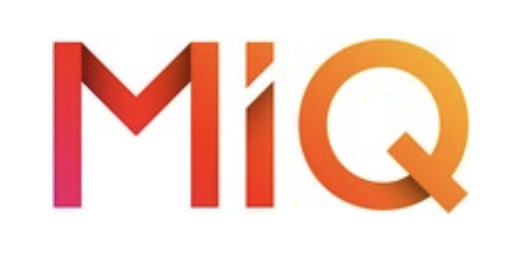What do Superbad, The Mask, and Stranger Things have in common? They are all entertainment titles that could describe the past few years collectively.
Global events forced many organizations into remote work cultures before they were ready, while a growing energy crisis added fuel — pardon the pun — to the movement. Investing in modern technology became more than a strategic choice, it was a necessity.
According to a 2022 PwC survey, CEOs highlighted technology as one of two key investments vital to “business resilience.” Of course, it’s not enough to invest in technology for its own sake; IT teams must future-proof organizational infrastructure and eliminate cost redundancies.
In this post, we examine IT modernization and unification, point out their benefits, best practices for achieving them, and lots more.
Understanding IT Unification
IT unification is the streamlining of an organization’s infrastructure into an efficient and cohesive structure. It involves integrating disparate systems, eliminating duplicate resources, and reducing stacks to essential tools only.
The goal is to create a cost-effective infrastructure that reduces security risks, eliminates redundancies, and provides better visibility.
Unfortunately, most often than not, shadow IT creeps in as teams adopt different point solutions to tackle specific challenges as they occur. And these tools eventually become unnecessary or replaceable by yet another in the stack!

By this time, the outliers have become hidden or enmeshed so much that admins either a) can’t find them or b) won’t risk pulling the plug — despite the unnecessary costs.
Unification clears the tangled web and removes unnecessary licensing fees, subscriptions, and maintenance costs of underutilized tools. Stack unification creates an environment that aids automation and makes integrations seamless. Furthermore, admins gain better visibility into the system, thus enhancing security posture via cyberattack surface area reduction and increasing overall system reliability.
Another benefit? It makes setups adaptable to future developments. A unified stack, devoid of outdated tech, is one you can count on to move where directed. This creates the necessary conditions that enable admins to meet expected and unexpected events.
Challenges of Outdated IT Infrastructure
An outdated infrastructure presents several problems, a few among which are:
Lack of Scalability and Flexibility
Built to support a defined range of workloads and data volumes, legacy infrastructures are unsuited to meet changing business needs.
Say you need to downscale, you’re stuck with more resources than you need but which require continued maintenance despite being underutilized.
Conversely, if the workload grows more than the infrastructure can handle, you’ve got to invest in upgrades which are expensive, cumbersome, and time-consuming.
Another problem of outdated infrastructure — as the pandemic readily showcased — is its inability to accommodate changing realities. Because they were designed to cater for on-prem workers, legacy infrastructures were incapable of meeting the needs of organizations when they had to support remote workers.
Security Risks and Vulnerabilities
An outdated stack is prone to security threats and vulnerabilities. No thanks to the numerous point solutions often deployed to maintain it, such a setup has a larger attack surface.
Attackers relish going up against technologies that have reached their end-of-support phase. Since vendors no longer provide security updates for such tools, any new vulnerability discovered is an entry point waiting to be penetrated.
Another security challenge an outdated stack throws up is its incompatibility with modern security solutions. This limits your ability to implement a Zero Trust strategy and handicaps your network against sophisticated attackers.

Inefficient Operations and Increased Costs
Legacy infrastructure, due to its lack of scalability, negatively impacts users’ productivity. This is especially true when the architecture is unable to handle the increased workload generated by more users. This slows response times and creates bottlenecks in users’ workflows.
The high maintenance costs associated with legacy infrastructure are another drawback. They are expensive to maintain because they require extensive tweaking to continue running. This considerably ramps up software, hardware, and personnel cost.
Unsurprisingly, it leaves many IT teams wondering whether their infrastructure creates more problems than it solves.
Key Components of IT Infrastructure Modernization
The following are essential parts of modernizing your stack:
Cloud Adoption and Migration
Cloud environments provide multiple advantages that make them a key part of modernizing your stack.
From an operations perspective, cloud adoption makes your setup scalable, and flexible. You can support varying levels of users with cloud platforms as they enable you to use more or less resources depending on need.
Also, their ability to serve global users means that your users are assured of support regardless of where they work.
A key benefit of moving to the cloud is the strain it eases on your IT team. As teams no longer have to deal with the grind of maintaining a complex on-prem system, they’re able to devote their energies to more purposeful uses.
From a cost savings perspective, cloud adoption shifts businesses from a capital expenditure model to an operational expenditure model. Rather than investing in and maintaining on-prem hardware and software, you pay for cloud services based on your organization’s actual usage.
Also, the significant decrease in IT teams’ workloads translates to you not needing to have as many hands as you would need to have on-prem. Translation: less personnel costs.
Virtualization and Containerization
A key part of unifying and modernizing your stack is making your resources serve as many purposes as they can. Virtualization and containerization are good examples of how to achieve this end.
Virtualization is an abstraction of a physical server into multiple virtual instances of it. It involves using a hypervisor to divvy up the physical resources of a server into multiple units called virtual machines (VMs).
These virtual machines continue to run on the physical server but have their own operating systems and are able to run independently of each other. Also, because they are separate machines, vulnerabilities in one VM are unlikely to affect other VMs within the same physical server.
Containerization, on the other hand, involves packaging an application and all its dependencies into a single container. This container is then installed onto the host machine’s operating system and runs independently of other containers.
IT teams typically leverage virtualization and containerization together but each can exist separately. Both technologies provide the efficiency and flexibility to support changing needs. And by adopting them, you consolidate multiple physical servers into a smaller number of virtual ones, streamline their IT processes, and reduce data center costs.

Software-Defined Networking (SDN)
SDN is a network approach that uses software to direct where data should be sent on the network. A traditional network consists of routers and switches which have their control and data planes tightly wound together.
SDN however decouples these planes and uses software to manage the control plane while the data plane remains distributed across network devices.
Another distinction between a traditional and software-defined network is that in the former, visibility depends on the connections between different devices. This is because devices in a traditional network are aware of the status of only devices close to them. A software-defined network however provides centralized information that helps you view and control the entire network.
A core reason to adopt an SDN approach is that it effectively complements cloud computing environments. Its flexibility, along with the dynamic nature of cloud services, facilitates seamless integration and management of cloud resources.
Another benefit of SDN is the agility it enhances thanks to its ability to manage data traffic depending on need and usage. It also enables the faster deployment of new services and increases network capacity.
Lastly, because SDN takes on several roles that were previously carried out by dedicated hardware, it reduces cost and cuts out the hardware footprint.
Future-Proofing with IT Unification
IT unification leaves the following impact on IT environments:
Simplified Management and Automation
Unifying your stack reduces complexities and potential conflicts. This straightens the learning curve that IT teams need to maintain the environment. Additionally, because unified infrastructures enable centralized management platforms, admins operate from a single pane of glass, saving time and effort. This singular data platform ensures consistency and reduces the risk of errors.
Finally, thanks to the smoother integrations between tools in a unified stack, IT teams face fewer challenges when automating tasks and workflows.
Enhanced Agility and Innovation
With fewer tools to manage, IT professionals get more proficient and specialized in using the chosen technologies. This expertise enables them to explore efficient sets of solutions, experiment with new technologies, and drive innovation within the organization.
Also, because they’re not burdened by the complexities of a sprawled toolset, they can quickly set up test environments and see how new technology would operate in their setup.

Improved Scalability and Cost-Efficiency
A unified stack copes with the rising or falling scale of operations seamlessly. Cloud-based solutions can also be leveraged to meet rising or falling workloads.
Thanks to the elimination of tools with duplicate or overlapping functionalities, you get to avoid unnecessary expenses on excess software licenses. You also get to bring hardware costs under control by any of the methods discussed earlier.
Best Practices for Successful Infrastructure Modernization
Looking to take the next step in modernizing your stack? Here are a few tips to consider:
Assess Current Infrastructure and Identify Gaps
First, get an accurate snapshot of your current infrastructure, including hardware, software, networking, and security components.
Then, look into how your infrastructure helps — or fails to help — you meet operational demands, compliance regulations, and business goals. Consider the compatibility of your infrastructure with modern technologies and determine whether it’s a help or a hindrance to adapting to future developments.
Remember to evaluate your stack’s costs and determine whether you’re paying for tools that you really need. Also keep an eye out for areas of vulnerabilities, inefficiencies, tools overlap, and resource underutilization.
Next, determine the scalability of your current infrastructure. Can it support your organization’s growth and handle increased workloads without performance bottlenecks?
Finally, assess your IT team’s skill set. Do they have the expertise to continue maintaining your infrastructure? In the event of the sudden departure of one or two key senior staff, can they be easily replaced internally or externally? Or will you be left scrambling for experts in outdated technology?
The results of these assessments will help you come to a conclusion about where your stack stands in relation to modern technology and what steps you need to take to keep pace.
Create a Comprehensive Migration Plan
Having established where you are, the next step is to develop a roadmap. Your migration plan should indicate timelines and the specific actions needed to transition your current stack to its desired state.
Design your migration plan to reduce disruptions as much as possible. A phased approach helps achieve this as it allows you to tackle one or more aspects of the infrastructure at a time. A phased approach should accommodate dependencies and begin with laying a solid foundation on which you incrementally build.
Suppose you’re migrating from on-prem infrastructure into the cloud for example; before moving your key resources, you’d do well to first set up your security network and identity and access management framework.

Then, begin migrating non-critical workloads. This gives your IT team hands-on experience with the migration process while minimizing the impact on core business operations. It also ensures that they address possible issues before tackling more critical workloads.
Having provided a stable environment, migrate your core business applications and data. To further reduce disruptions, conduct migrations during off-peak hours or weekends. This cushions its effect on daily operations and provides a window for resolving issues.
Speaking of issues, make continuous testing prior to migration an important part of your strategy; and put contingency or rollback plans in place in case of unforeseen problems.
Consult an Experienced Managed Service Provider (MSP)
Who needs an MSP when they’ve got an in-house IT team, eh? Maybe you.
MSPs offer a certain level of expertise that may not be readily available in-house. After all, they mostly work in multiple client environments and have likely been involved in more than a few modernization projects.
This gives them specialized expertise, resources, and industry knowledge that are significantly helpful in future-proofing your stack. Because they have hands-on experience in IT systems, they’re able to help assess your infrastructure and develop a modernization strategy.
Psst! A quick tip: because MSPs typically have established relationships with technology vendors, they can help you save costs by negotiating better terms and leveraging volume discounts.
Case Studies: Successful IT Infrastructure Modernization
JumpCloud encourages organizations to future-proof their IT infrastructure and has routinely provided scalable solutions that make this possible. Here are a couple of case studies:
ampliFI Loyalty Solutions, fka Augeo FI
Located in Naperville Illinois, ampliFI Loyalty Solutions, formerly Augeo FI is a credit and debit card rewards company that has helped 1,200+ institutions deliver loyalty programs.
Like most organizations at the time, ampliFI Loyalty Solutions started out using an on-prem infrastructure with Active Directory (AD) at the center of access management. Although they encountered problems managing their non-Windows assets — as expected — they were able to leverage third-party tools to bring these systems within AD.
Eventually, the company began looking forward to a cloud-based future where they could gain centralized control of all their digital assets.

To achieve the latter, Peter Lasky — the company’s Director of Technology — and his team examined various solutions. They arrived at JumpCloud as their first-choice solution ahead of other products including Okta because of its various functionalities and ease of use.
As Peter noted: “After my team and I finished with our testing, we all decided that we liked JumpCloud because it was clearly going to provide us with one portal to manage everything and because it’s easy to use and scalable.”
Thanks to that choice, ampliFI has been able to streamline user management tasks, save money, optimize PCI compliance audits, and strengthen security.
MiQ Digital
MiQ Digital is a media organization that works with marketing agencies in building data-driven advertising solutions. Headquartered in the UK, it has operations on four continents across the globe and employs well over a thousand people.
To support these users, MiQ initially had AD installed across all their locations and supported non-Windows users with multiple mobile devices and management tools. Also, MiQ operated a manual user provisioning and de-provisioning system as well as a manual user password reset system.

This setup was as costly as it was cumbersome. First, MiQ had to pay multiple infrastructure and licensing costs. Then they also had to conduct regular maintenance on their AD servers. Plus, neither users nor IT admins looked forward to requesting and conducting repeated password resets.
Eventually, MiQ had had enough and decided to invest in a modern solution.
After researching their options, the team decided that JumpCloud was the best fit for MiQ’s needs due to its support for remote work, intuitive design, and cost-efficiency.
Working closely with a JumpCloud customer support engineer, MiQ was able to fully automate its user onboarding and offboarding process, support employees, streamline device management, successfully wean itself off Active Directory, and future-proof its infrastructure.
Having JumpCloud in our ecosystem is a testimonial to the fact that we are on the right path to scale our business with the right future-proof tools in our pocket.
Dani Gardner, Senior IT Specialist at MiQ
Embrace a Modern Infrastructure With IT Unification
As businesses continue navigating changing realities, the safest bet is to ensure that your IT stack doesn’t contain dead weight, while being nimble enough to adjust with the times.
The best way to achieve this is by unifying your infrastructure and future-proofing your technology.
Unification efforts provide visibility into your stack, cut costs, and keep it agile in meeting changing workloads. It enhances your security posture and makes automation possible. Modernization keeps you from having to maintain outdated legacy infrastructure in an expensive kick-the-can-down-the-road exercise. It also ensures that your stack is well-positioned to support new technologies.
JumpCloud helps you achieve both. By providing a platform where you can leverage multiple tools and manage separate identities, JumpCloud enables you to reverse tool sprawl while putting you in the driver’s seat for cloud migration. As ampliFI Solutions’ Peter Lasky recommends:
“Sign up for a free account today and see if it’s the right path for you.”



